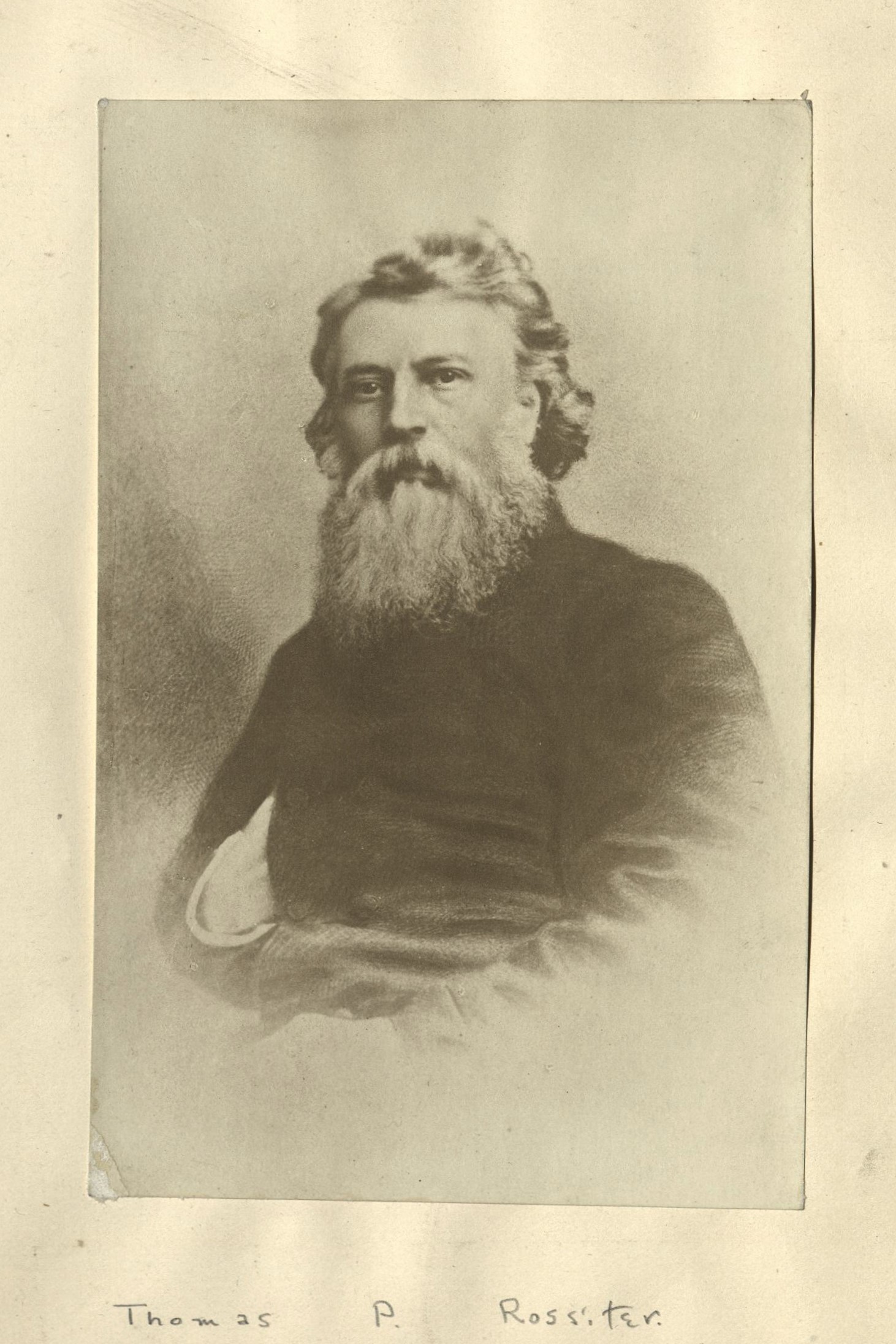Member Directory,
1847 - 1922
Frederick Law Olmsted
Landscape Architect/Journalist
Centurion, 1859–1903
Thomas P. Rossiter
Hartford, Connecticut
Belmont, Massachusetts
Age thirty-seven
Hartford, Connecticut

Archivist’s Notes
Brother of A. H. Olmsted; father of Frederick Law Olmsted Jr.; uncle (and adoptive father) of John Charles Olmsted
Century Memorials
It does not often fall to a man not in public life to render public service so distinctive, valuable, and lasting as that of Frederick Law Olmsted. On the eve of the Civil War, his letters to the New York Times from the Southern States, and the books made from them, gave to the country a body of observations as to that obscure and peculiar region, singularly fair, accurate, acute, and soundly reasoned. There had been nothing like them, and they can yet be consulted with profit. During the first two years of the Civil War he took upon himself the very great and difficult labor of the Executive Officer of the Sanitary Commission appointed by the Government to organize and apply a system for the care of the health of the vast and hastily recruited, ill-equipped army of volunteers. The energy, sagacity, patience, and fidelity with which he performed his task were nowhere surpassed in that period of tremendous effort. In the meanwhile he had, with the lamented Calvert Vaux, devised the plan by which the desolate and intractable area of rock and swamp which is now Central Park was made into one of the noblest pleasure-grounds of the world. From the beginning of this work, for more than forty years his rare powers were exercised with brilliant and solid success in all parts of the country in the peculiarly difficult art of the landscape architect—he in who builds with, as well as on, the face of the earth, and wins the forces of nature to continue the development of his ideal for years, possibly for generations after he is gone. In Central Park, in Prospect Park, Brooklyn, in the park system of Boston, in that of Buffalo, and in numerous other cities, in the wonderful grounds and structures of the World’s Fair at Chicago, the work done by him and his associates may be said to have established a new art for our country and a new and precious development of the art as old as the Gardens of Babylon. The strength of Mr. Olmsted lay in getting, by insight, by acute observation, by systematic study of permanent conditions the utmost that could be had for the purposes in view. He was singularly free from the temptations of the hobby and unambitious of a style to be recognized as his. Each problem was a new one, since no ground was like another, and every terrain was to be wooed rather than conquered. Thus a secret—if not the secret—of his varied and remarkable triumphs was the attitude of his mind toward that with which and in which he wrought. A delightful companion withal, a friend loyal and inspiring.
Edward Cary
1904 Century Association Yearbook
Olmsted was born in Hartford and was prevented from attending Yale fulltime because of poor eyesight. In 1844, he embarked on a farming career on Staten Island and, following an extended trip to England, he published the popular Walks and Talks of an American Farmer in England. In 1852, he traveled the Atlantic coast and wrote A Journey in the Seaboard Slave States. Olmsted believed that slavery was not only morally wrong, but expensive and economically inefficient.
His dispatches to The New York Times were collected into multiple volumes; the last of these, Journeys and Explorations in the Cotton Kingdom, was published during the first six months of the Civil War.
In 1859, Olmsted married Mary Cleveland (Perkins) Olmsted, the widow of his brother John, who died two years earlier. He adopted her three sons (his nephews), among them John Charles Olmsted. Frederick and Mary had two children who survived infancy: a daughter and a son Frederick Law Olmsted, Jr.
Olmsted was introduced to the English-born architect Calvert Vaux, and the two entered the Central Park design competition together, against Egbert Ludovicus Vielé among others. They emerged the winners in 1858. For the next four years Olmsted worked assiduously to create a park that would be both a work of art and a functional part of the city.
From 1863 to 1865, Olmsted was in California, where he secured the establishment of the magnificent Yosemite Park and served as the first president of the park’s commission. Returning to New York, Olmsted and Vaux designed Brooklyn’s Prospect Park; Chicago’s Riverside; the park systems of Buffalo and Milwaukee; and the Niagara Reservation at Niagara Falls. Olmsted designed works for dozens of colleges including Auburn, University of Chicago, Cornell, Stanford, Yale, and Wellesley. Somehow he found time, in 1865, to cofound the magazine The Nation.
Olmsted was a frequent collaborator with Henry Hobson Richardson, for whom he devised the landscaping schemes for six projects. He retired in 1895 and died in 1903.
James Charlton
“Centurions on Stamps,” Part I (Exhibition, 2010)
Related Members
Member Directory Home-
 A. H. OlmstedBankerCenturion, 1893–1929
A. H. OlmstedBankerCenturion, 1893–1929 -
 Frederick Law Olmsted Jr.Landscape ArchitectCenturion, 1904–1957
Frederick Law Olmsted Jr.Landscape ArchitectCenturion, 1904–1957 -
 John Charles OlmstedLandscape GardenerCenturion, 1898–1920
John Charles OlmstedLandscape GardenerCenturion, 1898–1920 -
 Thomas P. RossiterArtistCenturion, 1847–1871
Thomas P. RossiterArtistCenturion, 1847–1871 -
 Charles S. SargentProfessorCenturion, 1888–1927
Charles S. SargentProfessorCenturion, 1888–1927 -
 Calvert VauxLandscape ArchitectCenturion, 1859–1895
Calvert VauxLandscape ArchitectCenturion, 1859–1895 -
 George E. Waring Jr.Sanitary EngineerCenturion, 1875–1898
George E. Waring Jr.Sanitary EngineerCenturion, 1875–1898 -
 Frederick C. WithersArchitectCenturion, 1875–1901
Frederick C. WithersArchitectCenturion, 1875–1901






